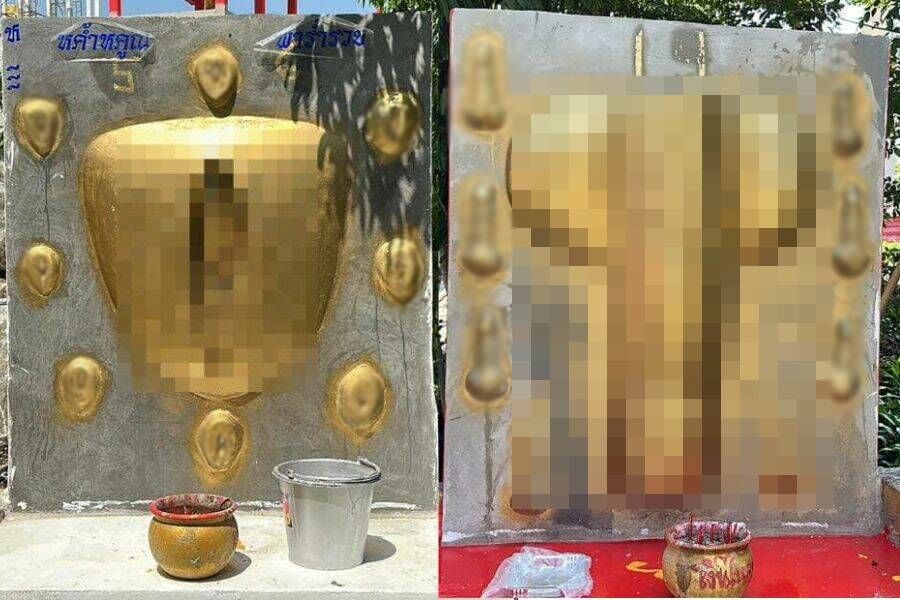Cult in Isaan encourages women to worship vagina and penis statues

A religious shrine in the Pak Chong district in the Isaan province of Nakhon Ratchasima or Korat is encouraging followers, especially women, to worship vagina and penis statues for good fortune.
A Facebook page, E Sor News 2 (อีซ้อขยี้ข่าว), shared a picture of some Thai people praying to the golden vagina statue with a caption that said…
“Weird… Putting gold leaves over the vagina statue for good fortune. Applying gold leaves to the vagina statue for good fortune. Seeking forgiveness from the vagina statue to end all suffering…”
The place where the vagina statue is located was later identified as Dhamma Chot Hirun religious shrine which is operated by a nun named Naowaratkotchaporn Simethawong, also known among her followers as Mother Brahmin. Aside from the vagina statue, the shrine also had a penis statue for worship.
The peculiar practice involves locals, particularly women, bowing down and paying respect to male and female genitalia statues to seek good fortune.
According to Naowaratkotchaporn, the acts are based on ancient astrological texts, called “Mahanarm.” The rituals are believed to remedy misfortunes, particularly for women who have undergone abortions and faced tough challenges in life, including poor health and financial hardships. She said…
“I established this premise as a sanctuary for distressed women who are uncertain about their path in life. Another objective is to resolve and eliminate all karma. For instance, when a woman undergoes an abortion, it can lead to an unsuccessful life. I believe that the vagina and penis represent sources of distress.”
Naowaratkotchaporn claimed that many people had come to meditate, observe eight precepts, and take a holy bath to get rid of bad luck. Each person had to pay 500 baht to join the ceremony.
Naowaratkotchaporn explained that paying respects to male and female genitalia sculptures was not an unusual practice. These body parts symbolise the origin and abundance of life. She contended that this belief dates back 5,000 years to ancient India, approximately 3,500 years before the birth of Jesus Christ.
Naowaratkotchaporn added that the worship originated during the Indus Valley Civilisation. The ceremony occurred together with the traditional teachings which emphasised women to pay respect to their husbands and men. Even though women and men are equal nowadays, many women still participated in these rituals.
On Saturday, May 20, local authorities, a village chief, police officers, and representatives from the National Office of Buddhism investigated the premises. The authorities did not ban the place but ordered them to relocate the large Buddha statue which sat close to the genitalia sculptures to avoid potential disrespect to Buddhism.
During a follow-up inspection today, Pak Chong District Chief, Kanatchon Sijaroen, stated that there was no damage reported from the ceremony. However, Kanatchon had assigned the village chief to supervise and keep order at the venue in the future.
Latest Thailand News
Follow The Thaiger on Google News:


























